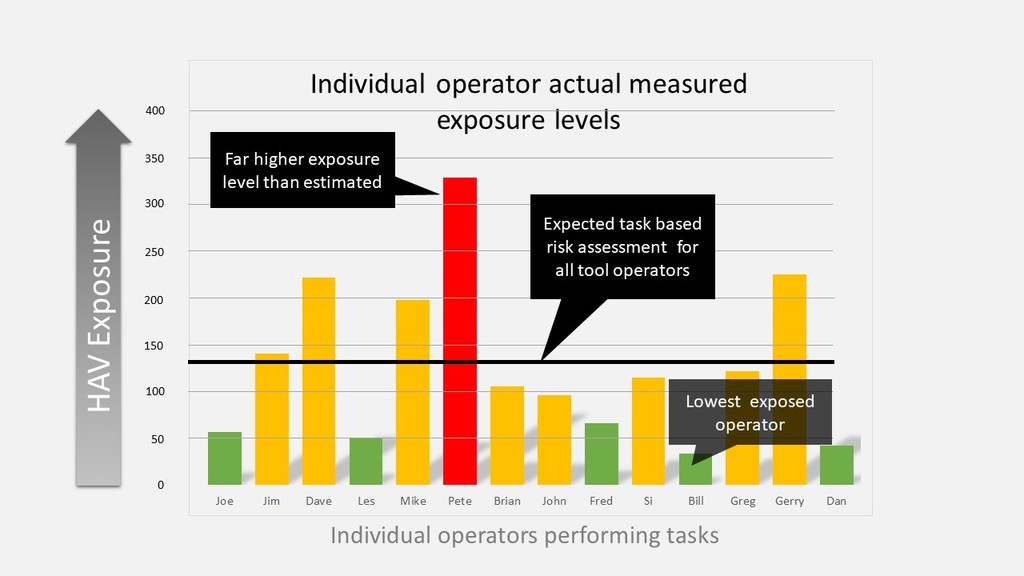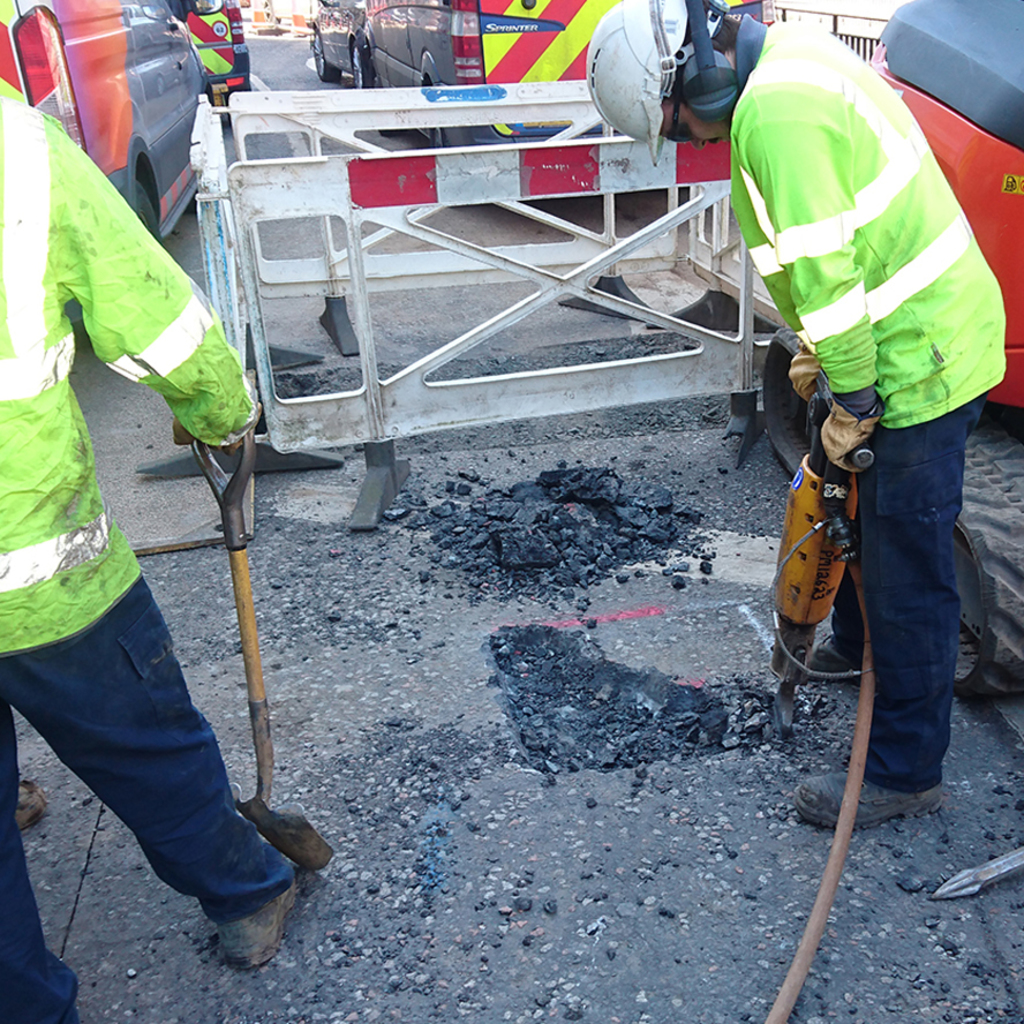
Kelly Rose
Editor

Kelly Rose
Editor
Reactec CEO Jacqui McLaughlin explores how the risk from exposure to hand-arm vibration is assessed and warns that assessment may not be effective in protecting people from the risk.
Exposure to vibration through the hand and arm system can cause serious vascular, neurological and musculoskeletal damage, which is collectively diagnosed as the industrial disease hand-arm vibration syndrome (HAVS). It affects sufferers from carrying out simple tasks like holding a cup of tea, getting dressed or reading a newspaper. Many HAVS sufferers are forced to change career or stop work entirely.
The disease became so prevalent with increased use of power tools that the EU in 2002 and the UK in 2005 released regulations to control the potential risk of developing the disease within the workplace. The regulations require employers to carry out suitable and sufficient assessments of risk, implement occupational health screening when the risk is of a certain level and most importantly reduce the risk as low as reasonably practicable.
Yet 15 years on from the UK regulations, HAVS is still the highest reported industrial illness in the UK. These statistics clearly demonstrate that employees risk assessments and controls are not addressing the problem.
Assessing exposure
So how is the risk from exposure to hand-arm vibration assessed and why is assessment not effective in protecting people from the risk?
Legally, assessment requires a determination of the time of exposure to HAV and a probable vibration magnitude experienced by the tool user during that exposure. Use of the word probable is very deliberate as at the time of writing the legislation, standards did not exist that would allow a practical 'accurate' determination of vibration magnitude during tool use.
The standards available, even now, call for a measurement protocol and instrumentation parameters that mean an accurate measurement can only be obtained economically for very short use of what is deemed to be typical of a tool. Such methods are, at best, carried out at intervals of every six months using a skilled technician and are a mere snap shot of what the tool may be used for.
How important can it be to have a practical real use assessment of a tool rather than one based on snap shot information? The answer is massively.
In a very detailed work study with a leading utilities company, it was reported that individuals who were deployed to do a very specific task with the same tool type, while deployed in multi-person teams, could face very different levels of HAV exposure. While nine out of 14 were able to stay under the task-based risk assessment, five were above and one particular individual almost reached the legal limit of exposure and was six times as exposed as some of his colleagues.
Employee’s have their health in the hands of their employers and are not aware of the actual harm that they are exposed to.
Source of variability
The source of variability in such a controlled exercise was principally two fold. Firstly the duty holder had applied an administrative control of asking the employees to work share across the task. In the reality of normal work conditions, the individuals shared the work unevenly.
Secondly, the vibration magnitude measured for each user using the tool varied depending on the workers technique or skill. While all workers used the same type of tool, for the same task on the same material, the measured vibration using a test method compliant to standards varied from 7.7 to 13.6m/s2.
Video evidence of the individual with the highest measured risk from the exercise showed that his technique resulted in less energy being transmitted into the surface he was working on, meaning that he took longer to complete the work and had more vibration energy being transmitted into his hands.
The HSE has published within its L140 guidance document on the regulations on HAV a very useful appendix which highlights the range of magnitudes possible from typical tools when used for their intended purpose, with some guidance on how to use tools to minimise vibration risk.
Tracking HAV exposure
Given this variability in actual exposure relative to the task based assessment, how can HAV exposure be tracked in order to be sure that employees are deployed safely?
A number of products have been developed over recent years to allow exposure data to be gathered for a full working day. Such technologies are generally referred to as monitors of HAV exposure and simply do not fully comply with the measurement standards for multiple complex technical reasons. However, efforts to explain the suitability of such technologies has left many in the marketplace confused.
What does it take for a HAV monitor to provide data that can allow a user to meet their legal obligations to manage HAV exposure risk?
The HSE confirms in its FAQ on HAV monitoring that continuous monitoring is not required to meet legal obligations but that there are benefits from monitoring such as validating risk assessments and effectiveness of controls.
The FAQ also highlights the dangers of essentially working people to the limits as opposed to managing the risk as low as reasonably practicable. In a recent extension to the FAQ the HSE clarify that monitors and in particular monitors off the tool do not measure the vibration magnitude in compliance with the standards. However since legal obligations require assessment of HAV exposure to use the probable vibration magnitude and not a measured vibration magnitude, the duty holder is still in a position to use a HAV monitor. Hence, in the last question from the FAQ, the HSE confirm that even an off tool monitor can be used provided the vibration magnitude data is representative of the tool in use.
The HSE's key messages are:
Exposure levels
If considering deploying a level of HAV monitoring, consideration should also be given to actual harm to individuals. There is a direct relationship between the level of exposure to HAV and the likelihood of developing what is a debilitating and irreversible disease. Therefore, from an individual’s perspective, the most certain way of ensuring they are not excessively exposed is to monitor their exposure in the same way that you would use gas detectors to monitor dangerous gases or a dive computer to manage your future dive plans.
If you have decided on a level of monitoring to manage your employees’ HAV exposure risk, how do you make the most out of that monitoring?
Firstly, ensure that there is a clear intent supported by allocated responsibilities to act on the information gained from the monitoring. Choose monitoring technologies that will readily allow the most at-risk people and greatest risk generators (tool use) to be prioritised in your risk reduction activities.
Secondly, ensure that there is a competence within the organisation to choose equipment that will most realistically assess the risk that is being monitored. Key is to appreciate that the vibration level of a tool is not fixed. It depends on the condition of the tool, the accessory used, what the tool is used for and the tool user.
Unfortunately, the standards for measuring a tool’s vibration are not suited to monitoring everyday use. Ensure your choice of monitoring technology is based on evidenced capabilities of that technology.
Again, with the right intent, real tool use exposure data will go further in ensuring the right priorities for operator training, tool maintenance and tool elimination. With the onset of the Fourth Industrial Revolution, where sensors and data-driven decisions can drive effective change, why not use them to drive down this preventable industrial disease?





Vantage Point
3 Cultins Road
Edinburgh
EH11 4DF
UNITED KINGDOM
0131 221 0920